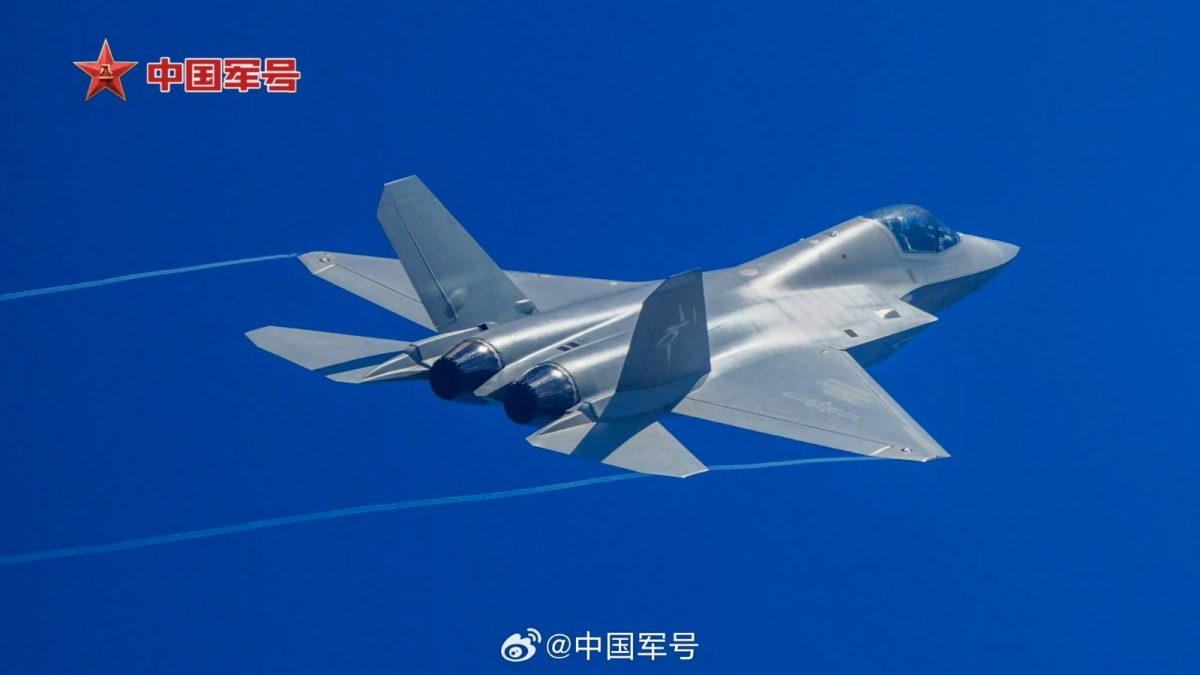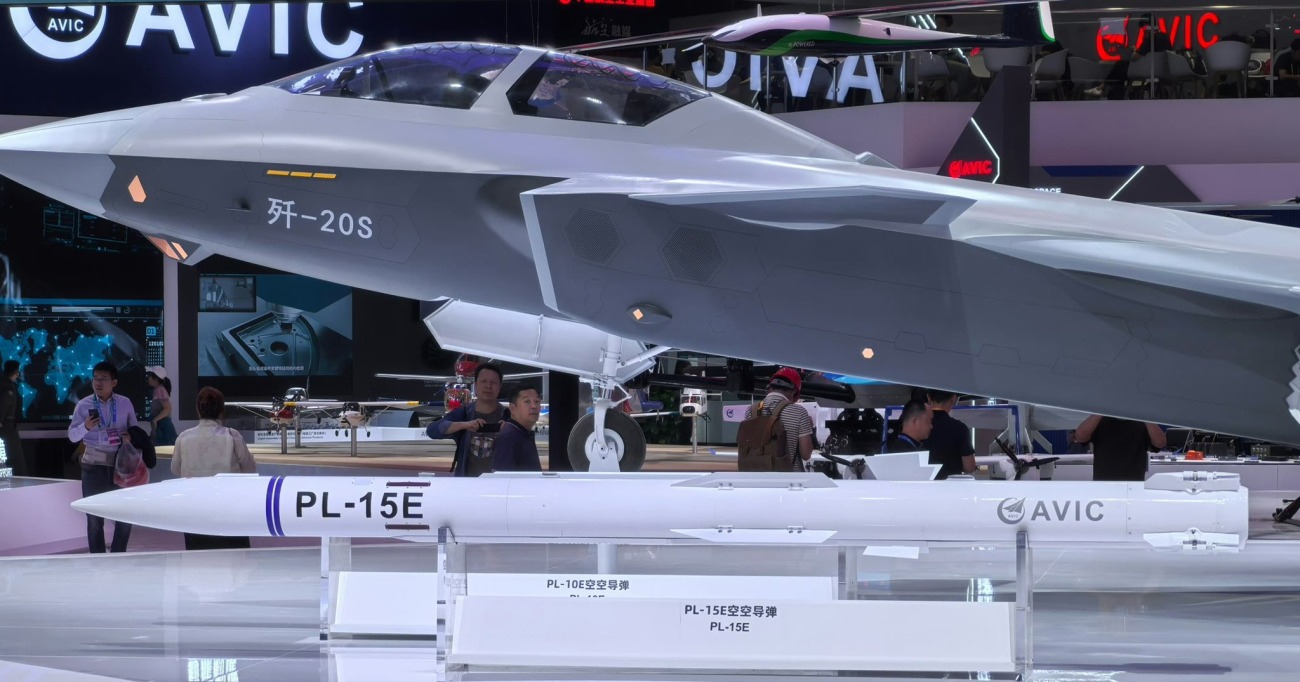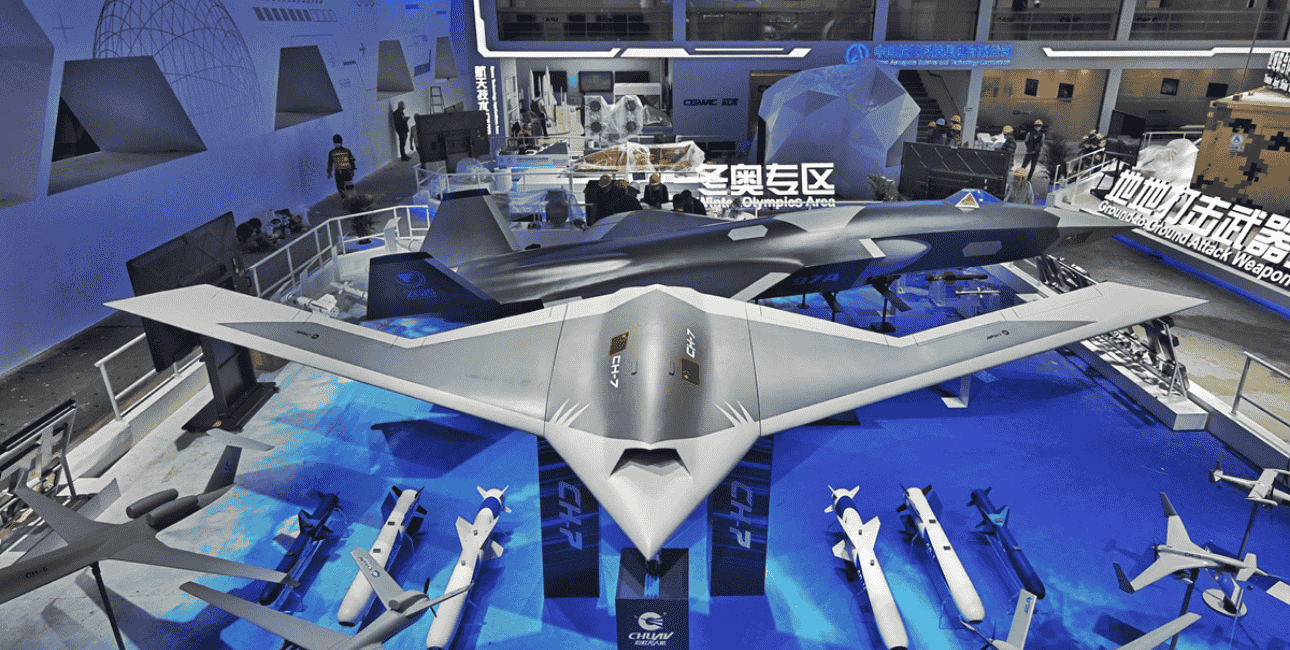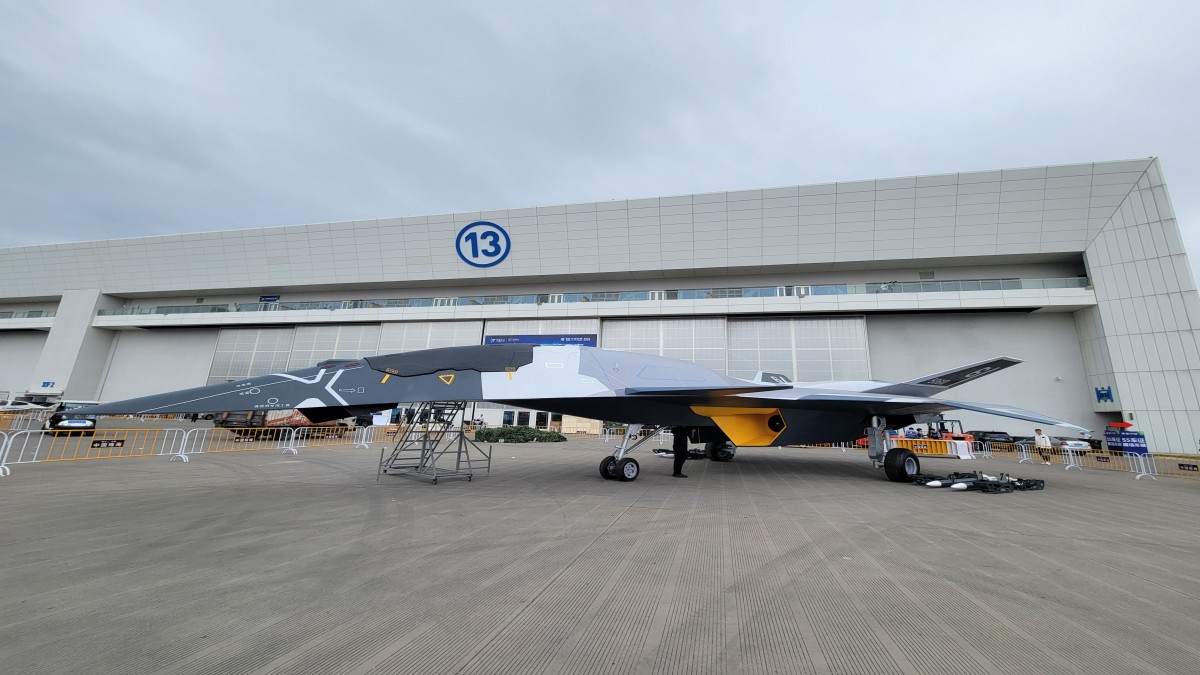By Air Marshal RGK Kapoor (R)
China has often used the Zhuhai air show to showcase its growing air superiority and technological prowess to the world. However, this edition of the air show was extra special, even by its own standards, as it is indeed rare for three fifth-generation fighters to participate in an international air show together.
The J-20, Su-57 (Russian fifth-generation fighter), and the newly unveiled J-35A are all at the Zhuhai air show in Guangdong province, southern China.
Additionally, there is the CH-7 stealth unmanned combat aerial vehicle (UCAV) displaying its kite-wing design, a new-look folding fin PL-15 long-range air-to-air missile to fit into the internal weapons bay of J-20/J-35 stealth fighters, and a mockup of its sixth-generation fighter.
Evolution Of J-35A
While much information is available on the J-20 fighter aircraft, the J-35A is the latest version of what started as the FC-31 stealth fighter program. Two prototypes of the Shenyang FC-31 were produced around 2010. They first flew in 2012 and were later seen during the Zhuhai Air Show 2014.
FC-31 is a light to medium-weight category fighter with stealth features. The highly upgraded and refined J-35A unveiled at the Zhuhai air show is smaller and lighter than the J-20 and falls into the category of F-35 fighter of the USA.
However, it is a little larger, heavier, and more powerful than its American counterpart, thanks to its two engines. This also reflects the difficulties faced by China in developing a capable aero engine for its fifth-generation fighter fleet.

Interestingly, Chinese state media posted a manufacturer’s video online in Jul 2024, christening the aircraft as J-31B. The change from FC-31 to J-31 denotes that the aircraft has cleared the formal requirements for military service and has an official designation for it to enter active service.
The aircraft was named “Gyrfalcon”.
The gyrfalcon is a rare large falcon found in the Arctic region, with white and dark color phases often used for hunting (Collins Dictionary). Interestingly, Gyrfalcon is the official mascot of the US Air Force Academy. It is rather interesting that China has realized the superiority of American technology and, hence, has focused its efforts on developing the latest platforms closely resembling American aircraft and UAVs.
China virtually ended its collaboration with the Russians after procuring the SU-35.
The evolution from FC-31 to J-35 is interesting. It signifies a process the Chinese follow while developing a new fighter aircraft. The prototypes have initials of “FC”, and as the aircraft is cleared for military service after a certain level of development the aircraft initials are changed to “J”.
The FC-31 was initially developed as a land-based fifth-generation fighter designed to be lighter than the J-20 to complement the PLAAF fifth-generation fleet.
It was also planned to be developed in an export variant. However, as the Chinese naval fleet expanded, the challenge of developing a fifth-generation carrier-based fighter for catapult operations from an aircraft carrier was taken up.
This indicates that the Chinese thought process mirrors American fighter development. Analysis of Chinese military developments over the last three decades indicates that it has heavily borrowed US technology and design to cut development timelines.
The J-35A made its first flight on 26 September 2023. The aircraft was displayed to the world during its maiden flight on the inaugural day of the Zhuhai air show as PLAAF celebrated its 75th anniversary.
Let’s discuss the evolution and refinement of FC-31 into J-35A. The aircraft looks sleeker, technologically evolved with changed undercarriage doors, a single nose wheel in the Air Force variant, Electro-Optical Targeting System (EOTS) similar to the F-35, a forward hinged canopy once again like the F-35 and the absence of pitot tube from the nose radome.
However, the role it will be designated for during air operations is unclear. A larger weapons bay in the future may allow it to undertake a precision strike role. While China could copy the design and drawings it clandestinely obtained from the USA, it is quite unlikely that China can imitate systems integration and data fusion, which makes the F-35 a true, low-observable aircraft.
This is something the world will not know till someone flies the aircraft or is allowed to sit in the cockpit with the systems powered on. Reducing heat signatures by shielding hot nozzle area and by slit nozzles, both these features are conspicuous by their absence in the J-35A since the engine for the true low observable capability is still under development.
It is quite likely that the aircraft is presently fitted with two WS-21 (upgraded WS-13) turbofan engines, which will eventually be replaced by WS-19, which is under development. The aircraft has limited load-carrying capability, which indicates that the PLAAF will use it for air dominance with a limited strike role.
The J-35A is likely cheaper to produce and operate than the J-20. In the long run, it will likely be a good replacement for the J-10, J-11, and even J-16.
The intention is to produce two stealth fighters to compete with the US, the only country operating two stealth fighters. Even if these aircraft do not match up with their US counterparts technologically, if produced in sufficient numbers, they could produce similar effects since the quantity has a quality of its own in near-parity situations.
Sensor fusion and decision-support systems are the most potent components of stealth aircraft, assisting the pilot in decision-making. Most modern Air Forces practice centralized planning and decentralized execution, where the pilots and controllers have the freedom to execute plans.
PLAAF has a rigid Command and Control system, which may restrict the realization of the full potential of such technology, even if it has been incorporated into the aircraft.
PL-15E And CH-7 Stealth UCAV
China also unveiled the new version of the PL-15 long-range air-to-air missile with folding fins. This modification could potentially allow J-20 and J-35 to carry six of these missiles instead of the four they presently carry.

Once again, this modification is inspired by the AMRAAM getting smaller fins to fit four of them into the internal weapon bay of the F-35.
The CH-7 Stealth HALE (High Altitude Long Endurance) UCAV has also been displayed at the air show. With a kite-wing design, this UCAV will provide a major boost to PLAAF’s air capability. Using its low observable features, the UAV is designed to conduct ISR missions deep into enemy air space.
It could potentially be armed to conduct offensive missions simultaneously. The UAV has an uncanny resemblance to the USA’s X-47 stealth UAV, which was discontinued after the production of two prototypes for the US Navy.

White Emperor, Sixth Generation Fighter
China also unveiled the mockup of its sixth-generation fighter, the “White Emperor,” on the inaugural day of the Zhuhai air show. The mockup looks highly conceptual since it aims to bridge the air and space capabilities with a single platform.
The Chinese leadership has set a very high bar for its aerospace engineers with this concept. While China is still struggling with the aero engines for its fifth-generation fighters, an aero-space capable sixth-generation fighter with canards looks like a long shot for operations in near space or space.

Nevertheless, knowing Chinese methods, it is quite possible that unveiling the White Emperor is a Chinese way of signaling to the world in general and the USA in particular.
Implications Of PLAAF Capability Enhancements
The J-35A has been developed as a lightweight stealth fighter for air dominance; its roles and tasks will likely expand as the aircraft undergoes further development. An export variant, which may be christened as J-35AE/E, is also likely.
Pakistan could be the first beneficiary of J-35A development. In January 2024, the Chief of Air Staff of the Pakistan Air Force (PAF) announced that the country was ready to acquire an export version of the J-35A. This announcement could not have been made without the tacit approval of the Chinese leadership.
Considering the time China took to export J-10CE to PAF, it is unlikely that PAF will get this capability in at least five to seven years. PAF has become predominantly Chinese in origin, which is mutually convenient for both China and Pakistan in their attempts to contain India.
However, even that timeline would give PAF an advantage since the Advanced Medium Combat Aircraft (AMCA) would still be some time away from induction into the Indian Air Force (IAF).
The newly developed aviation platforms and weapons showcased at the Zhuhai air show reflect Chinese ambition to project air power at extended ranges and achieve parity with America. China has realized the importance of air power both in technology and numbers.
In the near term, China will likely maintain a fleet of 4+ generation aircraft like J-10, J-11, and J-16 and fifth-generation J-20 and J-35A in an air dominance role.
In the mid and long-term, PLAAF will predominantly be a fifth-generation fighter force. It is also likely that the loyal wingman concept under development for J-20 will be implemented for J-35.
With two stealth fighters, long-range air-to-air missiles, stealth HALE UCAVs, and support fleets of tankers and AWACS/ AEW&C, China is coming of age in projecting force well beyond its borders through the medium of air.
It has already flown missions into the disputed air spaces in the East and South China seas to signal its intent. Its domestic industry capacity allows the production of J-35A in sufficient numbers quickly. These aircraft, UCAVs, and long-range air-to-air missiles supported by a large number of Y-20 tankers will significantly enhance PLAAF capability.
Technological advancements supported by numerical superiority are creating an asymmetry between India and China. India needs to address this technological and numerical disparity urgently.
- Air Marshal (R) RGK Kapoor, PVSM, AVSM, VM, is a retired officer of the Indian Air Force. He served as the Air Officer Commanding-in-Chief (AOC-in-C) of Central Air Command.
- VIEWS PERSONAL OF THE AUTHOR
- Mail EurAsian Times at editor (at) eurasiantimes.com




